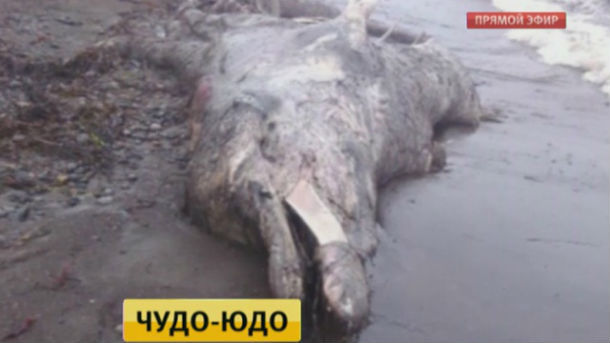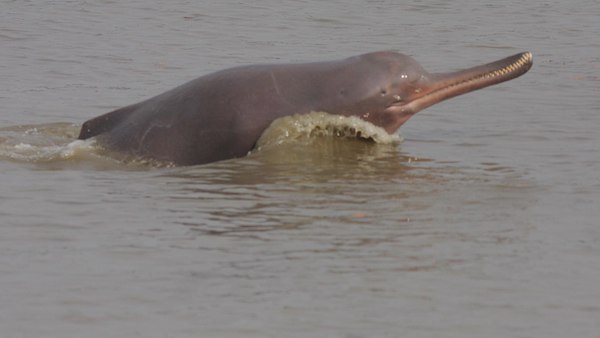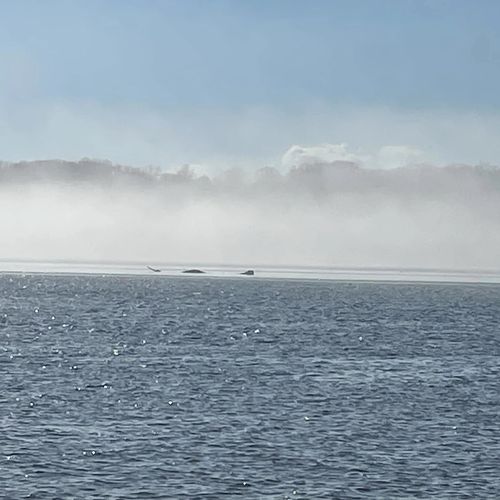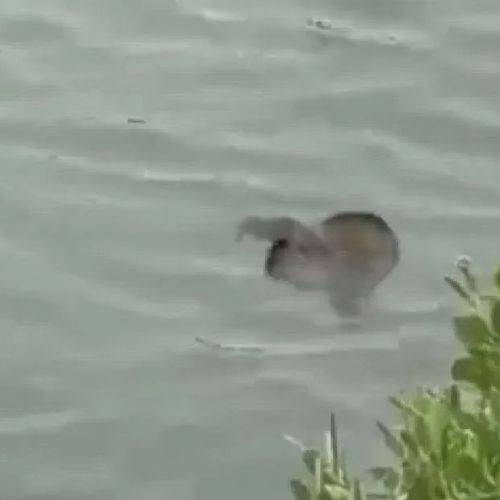| ID | #1638355563 |
| Added | Wed, 01/12/2021 |
| Author | July N. |
| Sources | |
| Phenomena | |
| Status | Investigation
|
Initial data
On the coast of Sakhalin, the carcass of a mysterious sea creature was thrown out. The city of Shakhtersk on Sakhalin has attracted the attention of zoologists, paleontologists and mystery lovers from all over the world. The carcass of a three-meter mysterious creature unknown to science was washed ashore — with a nose resembling a beak and a tail covered with fur. Versions about who it could be continue to multiply. If it's a dolphin, why is it hairy? And if a dinosaur, how could it have been preserved so well?
On the coast, residents of the Sakhalin gorodsk Shakhtersk recently went as if to a zoological museum. The sea waves washed ashore the half-gnawed carcass of an unidentified mysterious creature, almost twice the size of a human.
Outwardly, the sea monster resembles a dolphin. On the Internet, supporters of this version have found evidence. By the popular method of "comparing pictures", they even determined that in front of them were allegedly the remains of an Indian dolphin, the so-called Ganges dolphin, writes. The length of its body reaches almost three meters, and its nose is the same elongated and looks like a bird's beak. Everything would be fine — but how to explain the presence of fur on the back and on the tail? Another popular version has appeared on the Internet: this is a Jurassic marine dinosaur.
When all this fascinating discussion finally reached a logical dead end, the Far Eastern scientists said their weighty word. They left no trace of the scientific sensation. It turned out: it's not a dinosaur or an Indian dolphin. The discovery of the islanders, no matter how banal, was found in the Red Book.
Vadim Serkov, Deputy Director for Scientific Work of the Primorsky Aquarium:
"Judging by the shape of the skull, by the size of the animal, it is most likely a large dolphin from the beak family. The size of adult animals is from 5 to 9 meters. The largest is the northern floater. The animals are quite rare, they live above deep-water areas or in the depths. Therefore, they are extremely rare off the coast or in the area of the shelf."
In order to finally debunk the myth of the Sakhalin leviathan, employees of the local Fisheries Research Institute had already gathered on a business trip hundreds of kilometers from the island capital. The start of the emergency scientific expedition was scheduled at dawn. However, according to the residents of Shakhtersk, it is already too late: the sea did not wait for the arrival of the researchers and with the arrival of the storm took the mysterious exhibit back to its inaccessible storage facilities.
Hypotheses
Famous creatures
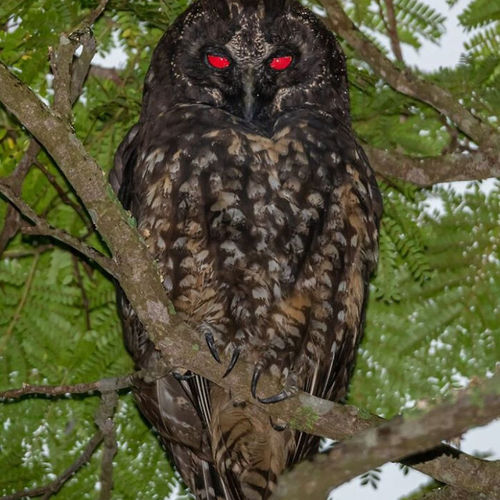
There are a huge number of different living organisms on our planet. According to recent estimates, the number of species of organisms on our planet is approximately 7-10 million. However, only 15% of the data are described today.
According to the calculations of Canadians, 2.2 million species live in the world's oceans, 6.5 million on land. There are only about 7.8 million species of animals on the planet, 611 thousand fungi, and 300 thousand plants.
Post-mortem changes
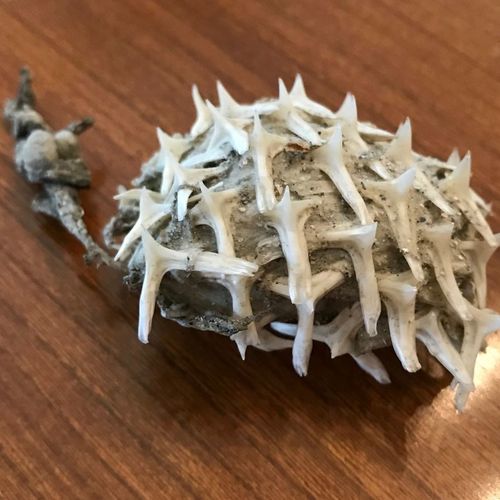
Because ordinary people are rarely familiar with the nuances of postmortem changes in organisms, it can often take them for something mystical.
Gray meat flies eat rotting tissue, leaving a sharp edge. This explains the "surgical" removal of organs and parts of the skin. However, such behaviors of the flies many take for the interference of aliens or attacked by unknown creatures.
The main signs of this injury:
Investigation
The Gangetic dolphin, or susuk, or blind dolphin, or susu (Latin Platanista gangetica)— is an aquatic mammal of the order of toothed whales, a representative of the non-taxonomic group of river dolphins.
The presence of "wool" can be explained by postmortem changes in the decomposing body or by the fact that it has become the habitat of marine flora or fauna.
Resume
Similar facts
Log in or register to post comments


